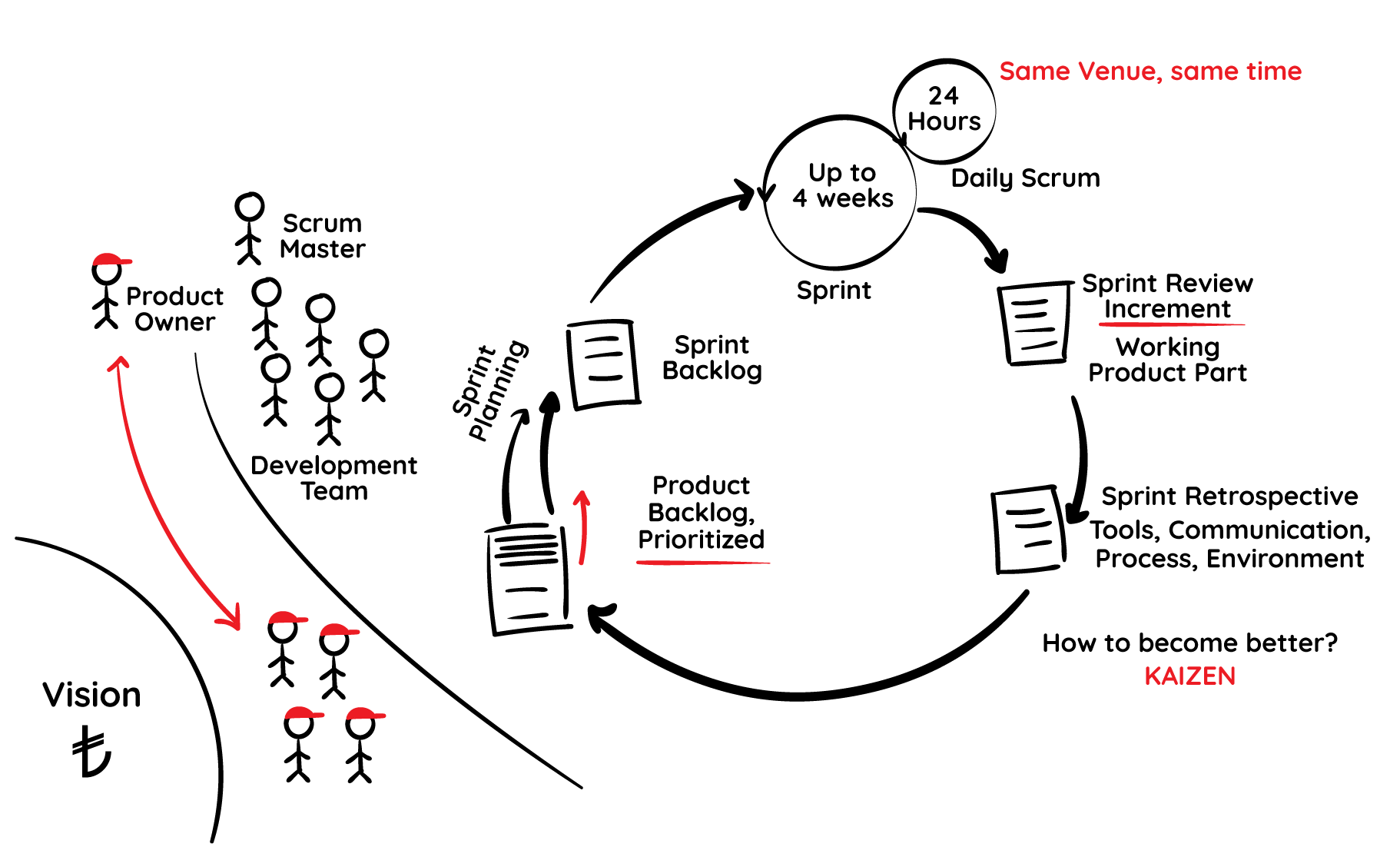Scrum is a human-centered framework consisting of two circles and four rectangles. Some people have the vision, others have the ideas, and others have the ability to transform concepts into working products.
So, what is a Scrum Team?
Scrum Team consists of people who are capable of transforming ideas into products.
The Product Owner gathers the ideas, evaluates them, and brings the ones with potential value to the Development Team.
The Scrum Master is well informed about the Scrum rules, theories and practices, and he/she is the person responsible for implementing these rules in a Scrum Team.
Development Team consists of people carrying out the development work, in a way creating out of nothing.
So, what are the two circles?
The first circle refers to the time in which the Scrum Team creates the working product pieces; we call this period Sprint. A Sprint cannot be longer than 4 weeks! The second circle, called the Daily Scrum, is a 15 minute period, in which the Development Team comes together every 24 hours, talks and plans about the past and the present, and discusses any possible obstacles.
What about the four quadrants?
The first quadrant is Product Backlog. It is a list of things to do for a product or service. The prioritization of the tasks in this list is performed by the Product Owner; the tasks are carried out by the Development Team. The items in the list are discussed individually at the Sprint Planning Meeting and a proper amount of work is undertaken considering the Development Team’s velocity. Sprint Planning Meeting is held at the beginning of each Sprint. Scrum Team does the planning on what to do and how to do in the Sprint, not plans!
While a plan cannot be changed, planning refers to the dynamic adaptation to the surrounding environment. On this topic, Eisenhower said during the Second World War, “Plans are nothing; planning is everything!” It is not realistic to make plans with a determinist approach in environments where conditions are highly variable.
The second quadrant is Spring Backlog. Development Team members create the content of the Sprint Backlog in the HOW section of the Sprint Planning Meeting. They do the planning on how to carry out the work and strive to proceed in Sprint.
The third quadrant is Sprint Review Meeting. All stakeholders involved in the project and the Scrum Team come together at this meeting. Scrum Team describes the work they did. They listen to the comments on their work and receive feedback. The ideas that come out of this meeting can increase the value of the Development Team’s work. This meeting can guide the future of the product.
The fourth quadrant is the Sprint Retrospective Meeting. All stakeholders can participate in this meeting as long as the members of the Scrum Team does not disapprove. As a rule, all members of the Scrum Team have to participate. They evaluate the communication, the experiences, the processes, and the tools among themselves. This meeting is an opportunity for the Scrum Team
members to improve themselves. In this meeting, answers to the questions like “what can we do better, how can we do better?” are sought.
Then the next Sprint’s Planning Meeting is held and all of the above procedure is repeated starting with the first step.







